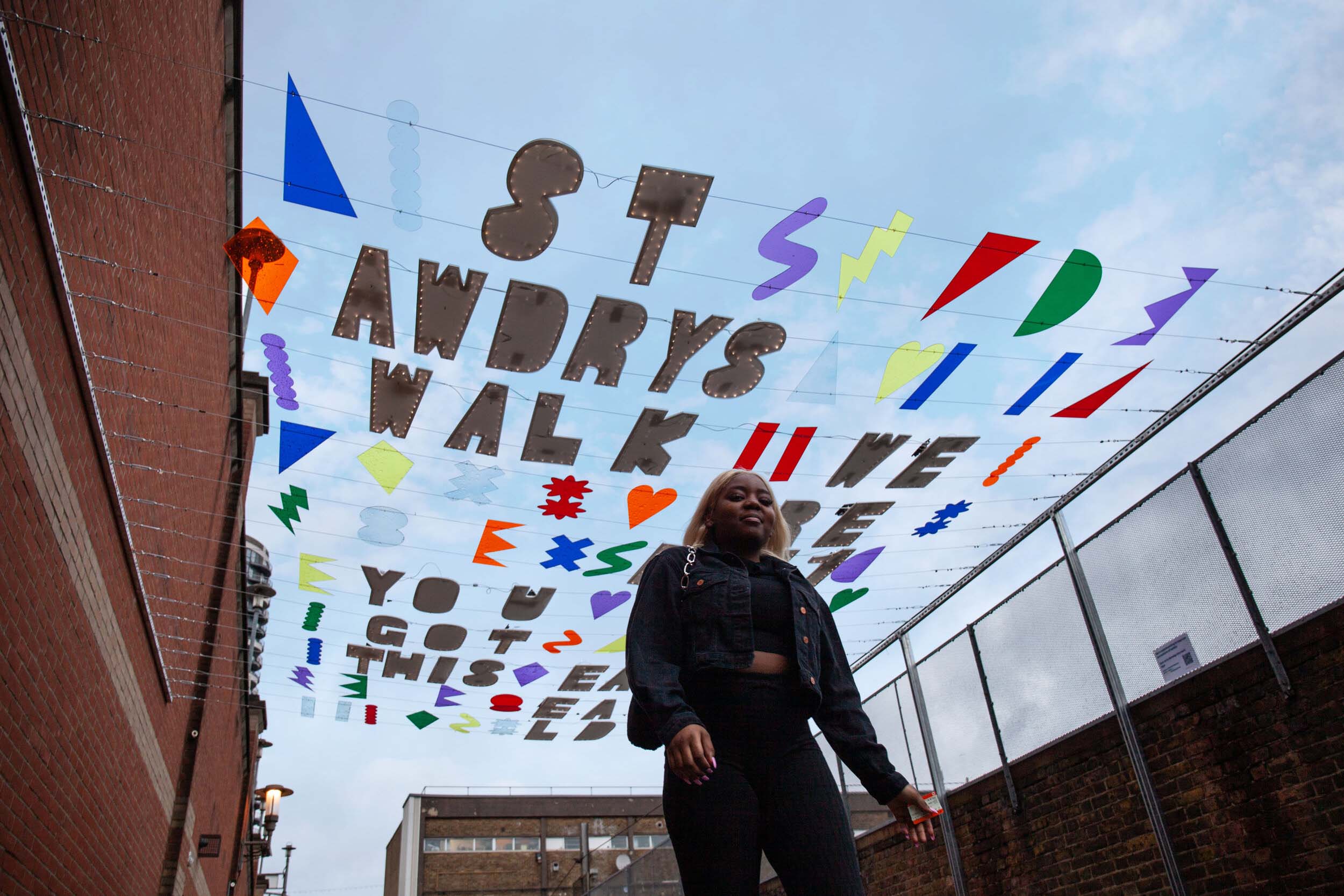


GENDER INCLUSION AND WOMEN'S SAFETY
Public Realm Guidelines
Year
2022
Service
CIC and Research
Client
Greater London Authority (GLA)
Location
London
Collaborators
Mayor's Design Advocates, All About Trans
The experiences, needs and realities of women, girls and gender diverse people have long been excluded from urban development processes. This has resulted in an under-provision of basic facilities that make public spaces truly accessible (for example adequate lighting, play spaces, sheltered rest spots, accessible, clear sight lines etc.) as well as an erasure of their experiences and needs in infrastructure investment decisions. As a result, many women, girls and gender diverse people feel inconvenienced, ill-at-ease and endangered in the urban environment.
This report seeks to address this by developing a toolkit of questions that can support public space producers to include a gender perspective in their projects. As part of the second phase of this work we will be rolling these questions out across 10 projects across London and capturing the impact they have.




Hanna Benihoud's Girls of the Light projected animated women in dark spaces in Tottenham. (Image credit: Andy Trace)
Street Space devised Her Barking, an experimental programme focused on women-led co-design around safety. (Image credit: Julia Forsman/ Street Space)
Urbana designs participatory planning board games that record the needs of residents and those who want to use their neighbourhoods creatively. (Image credit: TED×NTUA)
‘Listen’ by Camilla Akraka is the world’s first #metoo monument, dedicated to those who broke the silence. (Image credit: PhilipAvesand/VisitUmeå)
This report underscores London’s commitment to advancing gender equity and presents tangible actions public space projects can take towards this aim. This document is phase 1 of a larger programme of work which will support and guide the design sector, test and trial design and engagement approaches and evaluate and collect data across London. This report:
1. Presents a framework for thinking about women, girls and gender diverse people’s safety in public space,
2. Draws on key literature to describe the principles of gender inclusive urban development, and
3. Provides a set of questions to help guide urban public projects through key project stages: project set-up, understanding, making and using.
“Rather than removing park benches, authorities should focus on meaningful social investment that can alleviate inequality and social marginalisation.”
PHINEAS HARPER, 2022
GENDER INCLUSION AND WOMEN'S SAFETY
Public Realm Guidelines
Year
2022
Service
CIC and Research
Client
Greater London Authority (GLA)
Location
London
The experiences, needs and realities of women, girls and gender diverse people have long been excluded from urban development processes. This has resulted in an under-provision of basic facilities that make public spaces truly accessible (for example adequate lighting, play spaces, sheltered rest spots, accessible, clear sight lines etc.) as well as an erasure of their experiences and needs in infrastructure investment decisions. As a result, many women, girls and gender diverse people feel inconvenienced, ill-at-ease and endangered in the urban environment.
This report seeks to address this by developing a toolkit of questions that can support public space producers to include a gender perspective in their projects. As part of the second phase of this work we will be rolling these questions out across 10 projects across London and capturing the impact they have.




Hanna Benihoud's Girls of the Light projected animated women in dark spaces in Tottenham. (Image credit: Andy Trace)
Street Space devised Her Barking, an experimental programme focused on women-led co-design around safety. (Image credit: Julia Forsman/ Street Space)
Urbana designs participatory planning board games that record the needs of residents and those who want to use their neighbourhoods creatively. (Image credit: TED×NTUA)
‘Listen’ by Camilla Akraka is the world’s first #metoo monument, dedicated to those who broke the silence. (Image credit: PhilipAvesand/VisitUmeå)
This report underscores London’s commitment to advancing gender equity and presents tangible actions public space projects can take towards this aim. This document is phase 1 of a larger programme of work which will support and guide the design sector, test and trial design and engagement approaches and evaluate and collect data across London. This report:
1. Presents a framework for thinking about women, girls and gender diverse people’s safety in public space,
2. Draws on key literature to describe the principles of gender inclusive urban development, and
3. Provides a set of questions to help guide urban public projects through key project stages: project set-up, understanding, making and using.
“Rather than removing park benches, authorities should focus on meaningful social investment that can alleviate inequality and social marginalisation.”
PHINEAS HARPER, 2022